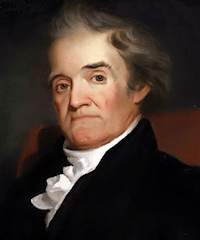- The most valuable tool for exploring the scope and complexity of Dickinson’s canon is the Emily Dickinson Archive, created and maintained by the Houghton Library at Harvard University in partnership with other libraries and institutions that hold Dickinson materials. The EDA provides images of the manuscripts of Dickinson’s poetry, based on Franklin’s The Poems of Emily Dickinson: Variorum Edition, along with transcriptions, multiple versions, publishing information, annotations, and a rich Resources list.
- The Emily Dickinson Museum at the Homestead (the house she lived and died in), in Amherst, Massachusetts, is the mecca for all things Dickinson. They give tours of the Homestead and Dickinson’s bedroom (complete with a replica of the famous white dress and tiny desk) and the Evergreens–the house next door that Edward Dickinson built for his son Austin and his wife Susan. The Museum’s website contains helpful biographical and contextual information.
- A valuable scholarly resource is the Dickinson Electronic Archives, created by a collective of Dickinson scholars, and containing helpful material and some primary documents by Susan Dickinson. There are two versions: DEA 1 dating from its inception in 1994-2012, and DEA 2, which dates from 2012 to the present. Both offer a list of resources on Dickinson scholarship, including links to digital projects and an extensive bibliography.
- Indispensable for reading Dickinson is The Emily Dickinson Lexicon, edited by Cynthia Hallen, which is a dictionary of over 9,000 words used in Dickinson’s poetry and their definitions as recorded in the dictionary we know Dickinson used and consulted frequently, Noah Webster’s An American Dictionary of the English Language (1844 printing of the 1841 edition).
-
 Another rich resource is The Classroom Electric: A constellation of web sites on Emily Dickinson, Walt Whitman, and nineteenth-century American Culture, which contains many primary materials, especially related to the Civil War.
Another rich resource is The Classroom Electric: A constellation of web sites on Emily Dickinson, Walt Whitman, and nineteenth-century American Culture, which contains many primary materials, especially related to the Civil War. - Fans of Dickinson might also be interested in the Emily Dickinson International Society (EDIS), founded in 1988 to promote the study and appreciation of Dickinson’s work. The EDIS runs an annual conference, usually in August, which is open to all but requires registration, and a critical institute for graduate students and early career scholars. Check out the EDIS Bulletin, which lists conferences, events and publications, and The Emily Dickinson Journal, which offers scholarly articles on the poet, often clustered around a theme.”
- Another excellent source of “Further Reading” can be found in the useful collection of contextual essays, Emily Dickinson in Context, edited by Eliza Richards (NY: Cambridge University Press, 2013). Richards offers lists of further reading for each of the 33 sections of the collection, ranging from local environments, literary contexts: sources, influences, intertexual engagements, social, cultural, political and intellectual contexts, and reception.
Skip to content

